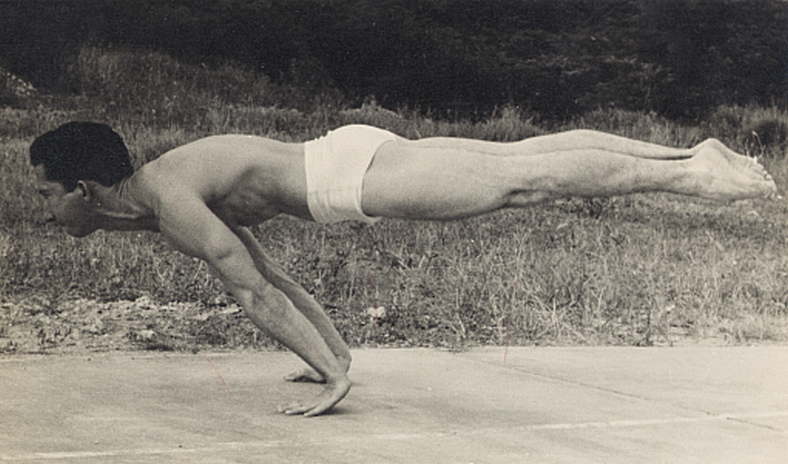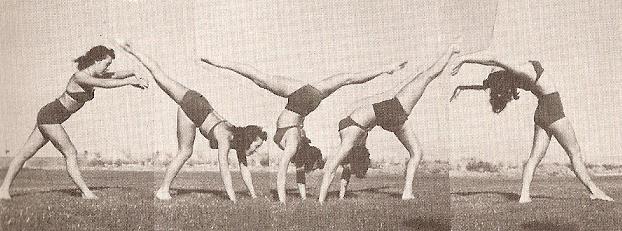An older hand balancer recently sent me a CD full of pictures of himself and others hand balancing. There are some amazing pictures and I thought I’d start off with one of the best. And there will be many more coming posted up here. Without further adieu meet Rafael Guerrero.

What most people don’t realize is how to do the planche correctly. While any semblance of a planche is a great display of strength and skill, when you can pull it off in this form its that much better. Of course to do it like this being a much smaller size is a plus!
Here’s a small section from The True Art and Science of Hand Balancing talking about the correct form of the skill.
“As exemplified by Paulinetti, the planche on two hand’s finds the body straight, flat and horizontal from throat to toes, and especially from throat to pelvis. Since the chest is thicker than the waist, this means that the shoulders are decidedly humped, corresponding very much to the hips. The position is much as if the performer were lying on a bench with chin and toes extended over either end–there is no arch in the back, and the hips are NOT flexed at all. This is where much of the trouble comes in, just as in doing the straight handstand with the head between the arms. Usually the performer gets the chest fairly well positioned, but instead of leaving the hips straight and then flexing the waist area of the spine slightly, he leaves his arch in the back and jack-knifes the legs forward (pretty much as in Figure 6) in order to get the feet down into line with the trunk. Again, in trying the planche–especially if endeavoring to get the flat chest effect–he neglects to thrust the chin forward and as a result has his face looking right at the floor instead of raised about 45 degrees and looking straight ahead.
“All in all, the correct position is decidedly not a normal one to attain, especially to a balancer accustomed to arching his back, and nine out of ten aspirants never even approach it. They usually wind up in nothing other than a “horizontal handstand” position–back arched, head up, and latissimus muscles hooked against the triceps. Understand, this is much of an accomplishment in its own right…but it is not the true planche.”
If you want to find out much more on the planche the read the full chapter in the book for the full details. But now you know some of the specifics for what it takes to do a true planche.
Good Luck and Good Hand Balancing,
Logan Christopher
P.S. There’s still time to take the short survey so I can find out exactly what you want. Click here.







